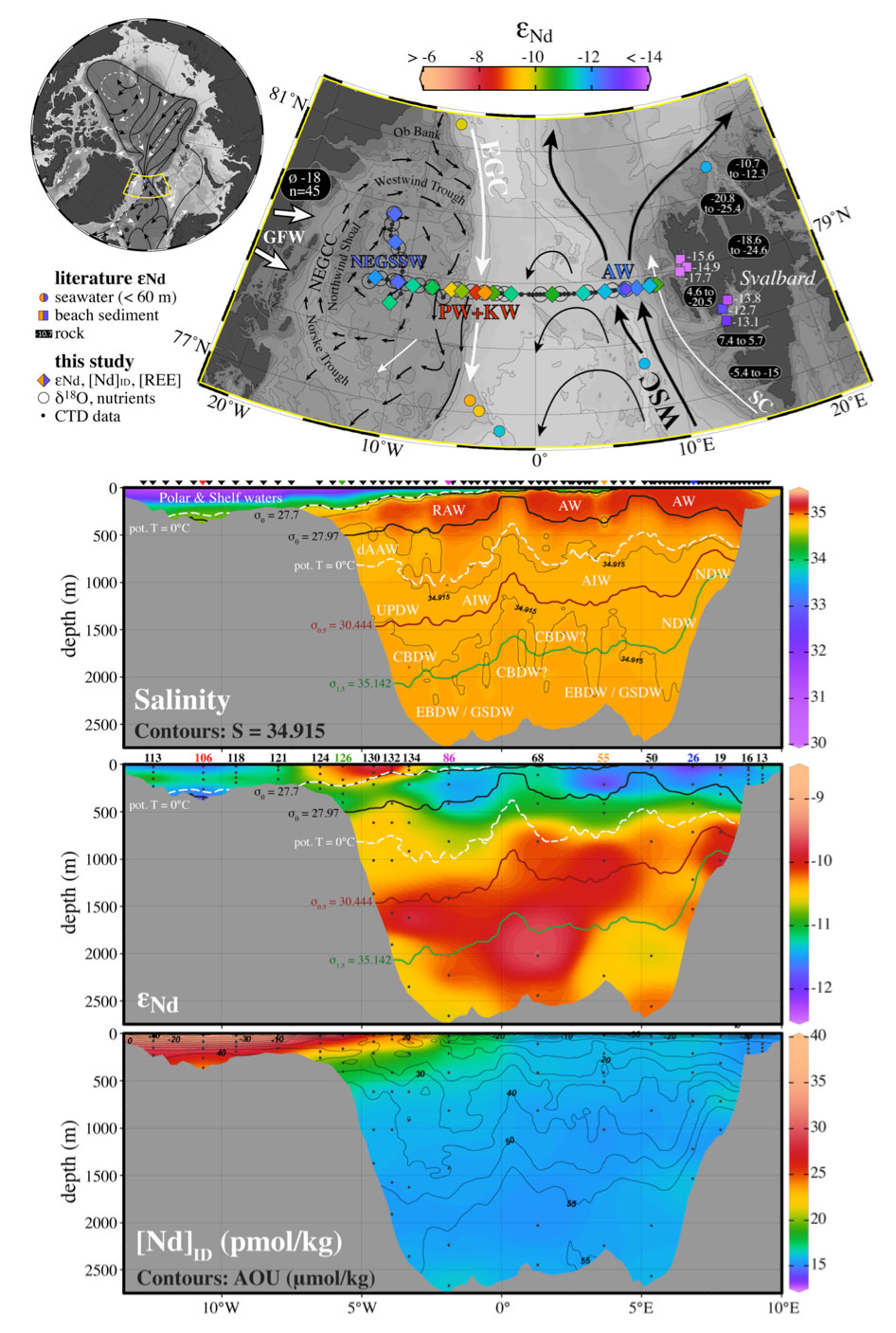Dissolved neodymium isotopes and Rare Earth Elements combined with oxygen isotopes trace water masses in the Fram Strait
Georgi Laukert and co-workers (2017, see reference below) provide new insights into the sources, distribution and mixing of water masses passing the Fram Strait, the gateway between the Arctic Ocean and the Nordic Seas, based on a detailed geochemical tracer inventory including dissolved neodymium isotope (εNd), rare earth element (REE) and stable oxygen isotope (δ18O) data (see figure). They show that Nd isotope and REE distributions in the open Arctic Mediterranean (Arctic Ocean and Nordic Seas) primarily reflect lateral advection of water masses and their mixing and that the pronounced gradients in εNd signatures and REE characteristics in the upper water column can be used to assess shallow hydrological variability within the Arctic Mediterranean.
In particular the advection of northward flowing warm Atlantic Water, shallow southward flowing Arctic-derived waters, and intermediate and deep waters is clearly reflected by distinct εNd signatures, Nd concentrations ([Nd]) and REE distributions. Waters with hydrographic characteristics similar to those of Arctic-derived waters have different εNd and [Nd] values in the upper ~100 m on the NE Greenland Shelf (see figure: NEGSSW), which suggests local addition of Greenland freshwater.

Figure: Upper panel: Bathymetric map of the Arctic Mediterranean with the inset representing the Fram Strait region. The surface Nd isotopic composition (εNd) of seawater from literature and this study is shown as color-coded symbols. The literature εNd values of rocks and beach sediments are shown in addition. Lower panel: Distribution of salinity (all CTD data), εNd and Nd concentrations ([Nd]ID, in pmol/kg) along the latitudinal section at 78.8° N. Click here to view the figure larger.
Reference:
Georgi Laukert, Martin Frank, Dorothea Bauch, Ed C. Hathorne, Benjamin Rabe, Wilken-Jon von Appen, Carolyn Wegner, Moritz Zieringer, Heidemarie Kassens, Ocean circulation and freshwater pathways in the Arctic Mediterranean based on a combined Nd isotope, REE and oxygen isotope section across Fram Strait, Geochimica et Cosmochimica Acta 202, 385-209, DOI: http://dx.doi.org/10.1016/j.gca.2016.12.028.
